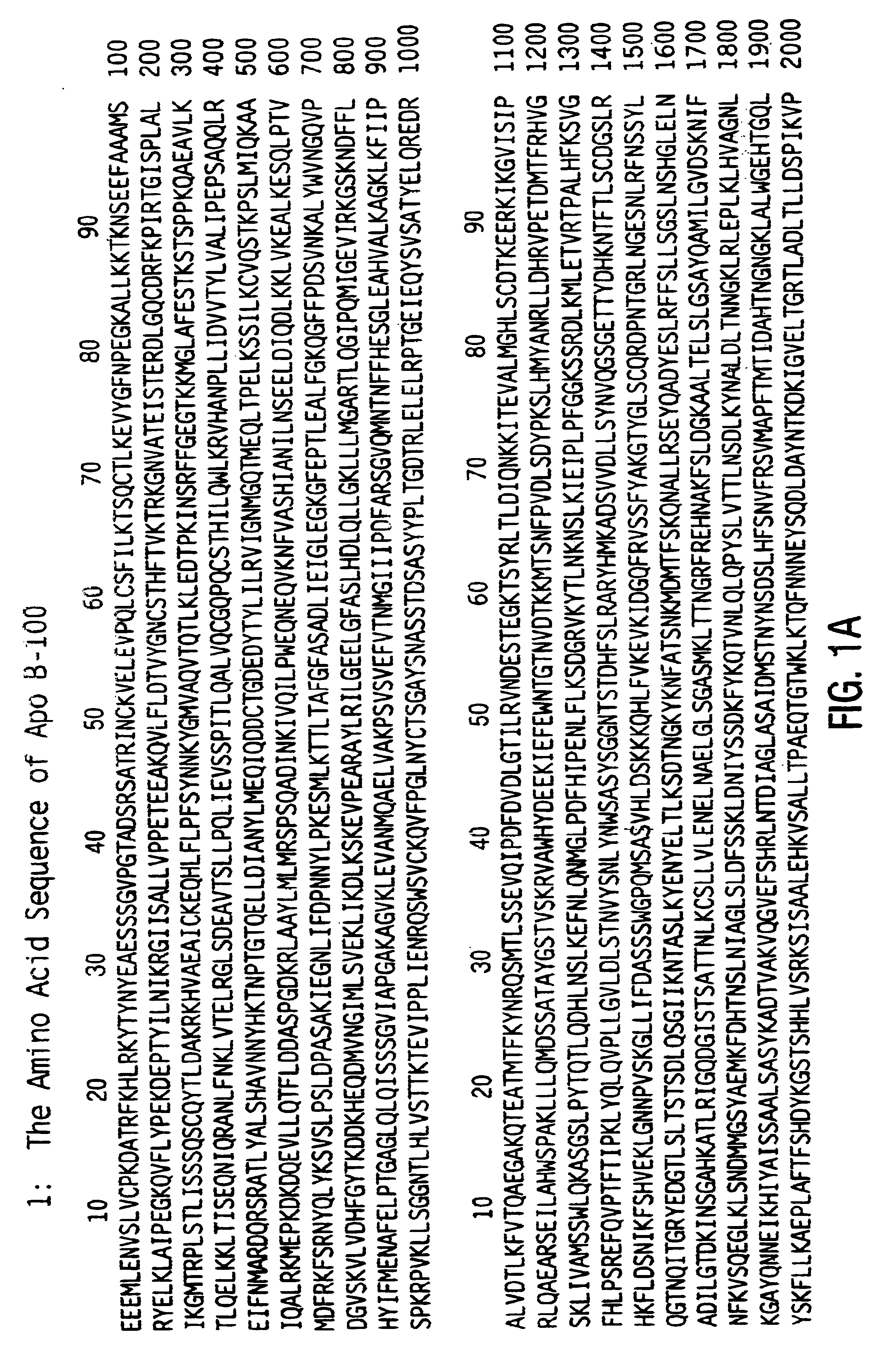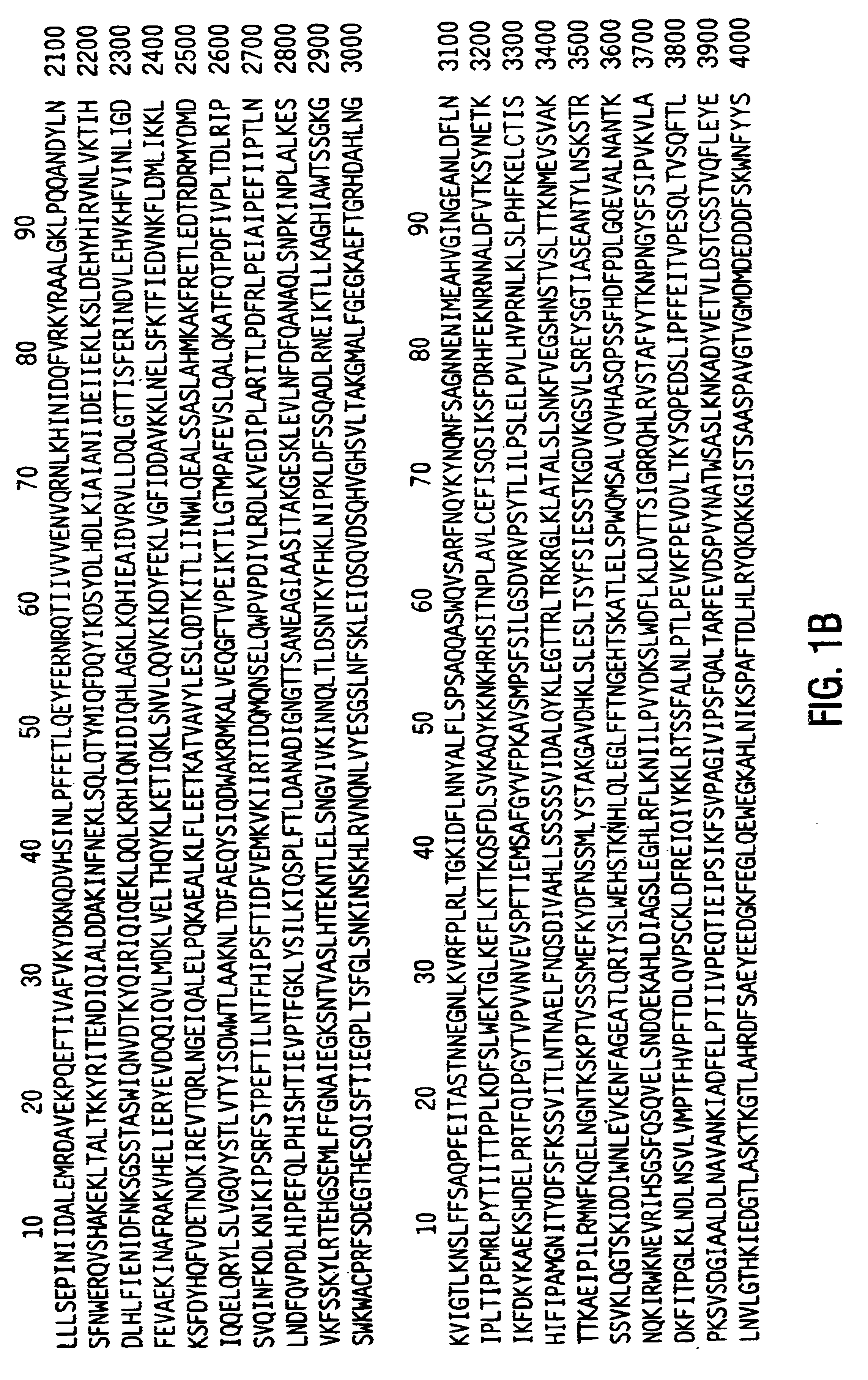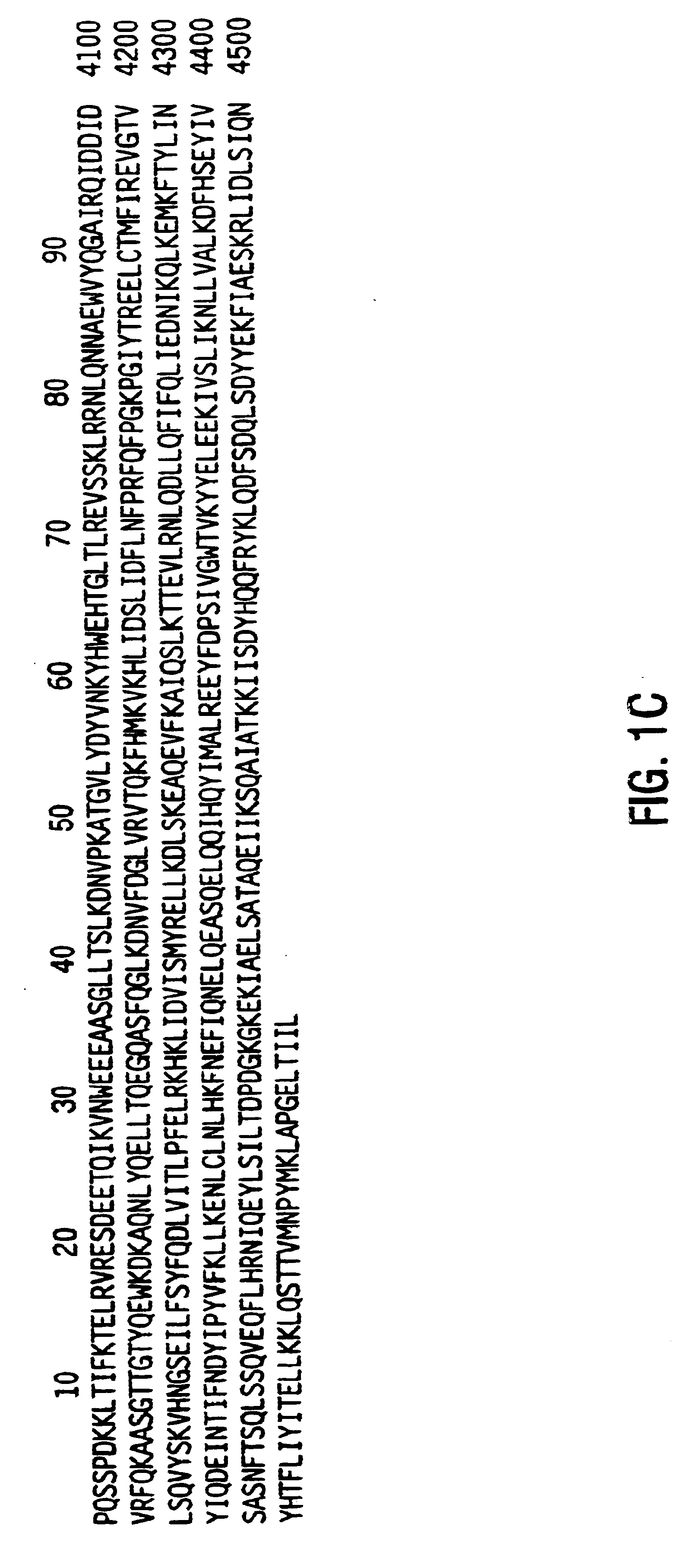Lipoproteins as nucleic acid vectors
a nucleic acid and lipoprotein technology, applied in the field of gene delivery system, can solve the problems of strong immunological response of the host, inability to use in vivo applications of high-pressure nucleic acid bombardment, and inability to achieve in vivo applications, so as to reduce the number of malignant cells or their growth rate, suppress uncontrolled cell growth, and restore growth suppression control
- Summary
- Abstract
- Description
- Claims
- Application Information
AI Technical Summary
Benefits of technology
Problems solved by technology
Method used
Image
Examples
example 1
Materials and Methods
1. Isolation of Plasma Lipoproteins
Restriction endonucleases were purchased from Life Technologies, and Protease inhibitors (i.e., leupeptin, PMSF, and Trasylol) were purchased from Sigma Chemical Company. Plasma lipoproteins were isolated using standard sequential flotation ultracentrifugation methods as described (Schumaker and Puppione, 1986). Throughout the entire procedure samples were kept on ice or at 4.degree. C. unless otherwise stated.
Subjects were fasted for at least 4 h prior to the start of the experimental procedures.: Blood was drawn into sterile, vacuumed glass tubes containing anticoagulants, e.g., 0.1% (ethylenedinitrolo)-tetracetic acid (EDTA) or heparin. Plasma was obtained by centrifugation (10 minutes at 3000.times.g) and immediately adjusted to 0.005% phenylrnethansulfonyl fluoride (PMSF), 10KIU Trasylol / ml, and 1 .mu.g leupeptin / ml. VLDL, LDL, and HDL fractions were isolated by sequential flotation ultracentrifugation for 18 h at 40,000 r...
example 2
Binding of Human Genomic DNA to Human LDL
The binding of human genomic DNA (hg DNA) to human LDL has also been demonstrated. Each lane of the agarose gel contained hg DNA cut with Alul or HindIII. In addition, human VLDL and mouse LDL were run alongside the hg DNA.
Plasma lipoproteins were isolated from human or mouse blood according to the protocol described above. DNA-binding studies were performed using human genomic DNA digested with either Alul or HindIII. Following electrophoresis, the gel was stained for DNA with ethidium bromide prior to protein staining in a solution containing 50% V / V ethanol, 10% V / V acetic acid, and 0.25% Coomasie Brilliant Blue R-250 (CBB R-250, Bio-Rad Labs).
Each lane contained 5 .mu.g human genomic DNA (hg DNA) cut with Alul or HindIII. In addition, human VLDL (10 .mu.g protein per lane) human LDL (35 .mu.g protein per lane) and mouse LDL (10 .mu.g protein per lane) were also analysed.
Bands in this study showed specific binding of digested human DNA fra...
example 3
Binding of Plasmid DNA to Human LDL
Plasma LDL were isolated from human blood according to the protocol previously described in Example 1. DNA-binding studies were using DNA (pBluescript II KS, Stratagene Inc.) digested with Pvu I. Following electrophoresis, the agarose gel was stained for DNA with ethidium bromide prior to protein staining in a solution containing 50% V / V ethanol, 10% V / V acetic acid, and 0.25% Coomassie Brilliant Blue R-250 (CBB R-250, Bio-Rad Labs). The binding of plasmid DNA to human LDL was shown in agel which contained contains 0.5 .mu.g molecular size DNA marker (Lane 1); 2 .mu.g pKS DNA cut with Pvu I (Lanes 2-4); 35 .mu.g human LDL (Lane 3) and 70 .mu.g human LDL protein (Lane 4).
Results of the electrophoretogram illustrated specific binding of PvuI digested plasmid DNA (pBluescript II KS, Stratagene Inc.) and human LDL. Increased amounts of human LDL also caused an increase of DNA shifted to the LDL location and a decrease of the free Pvu I digested DNA ban...
PUM
| Property | Measurement | Unit |
|---|---|---|
| density | aaaaa | aaaaa |
| pH | aaaaa | aaaaa |
| temperatures | aaaaa | aaaaa |
Abstract
Description
Claims
Application Information
 Login to View More
Login to View More - R&D
- Intellectual Property
- Life Sciences
- Materials
- Tech Scout
- Unparalleled Data Quality
- Higher Quality Content
- 60% Fewer Hallucinations
Browse by: Latest US Patents, China's latest patents, Technical Efficacy Thesaurus, Application Domain, Technology Topic, Popular Technical Reports.
© 2025 PatSnap. All rights reserved.Legal|Privacy policy|Modern Slavery Act Transparency Statement|Sitemap|About US| Contact US: help@patsnap.com



